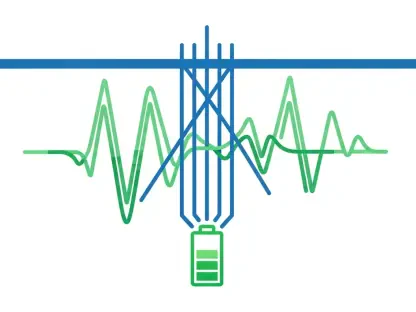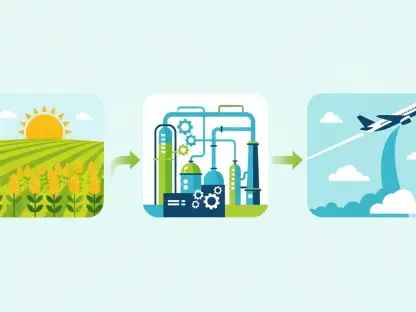Telecommunications companies (telcos) are increasingly turning to artificial intelligence (AI) to manage their energy consumption more effectively. This shift is driven by the need to reduce operating expenses and address sustainability concerns. As data traffic continues to grow, telcos face the challenge of decreasing energy usage while maintaining high service quality.
The Dual Challenge of Data Traffic and Energy Consumption
Growing Data Traffic and Energy Demands
Telcos are grappling with the dual challenge of managing an ever-increasing volume of data traffic while striving to reduce their energy consumption. In 2023, the average energy usage of communication service providers (CSPs) globally decreased by 1.1%. However, the energy usage of their webscale suppliers grew by 16.4%, indicating a rise in indirect emissions as more operations are moved to third-party cloud environments. This trend underscores the importance of energy efficiency for both sustainability and cost management, as energy costs can account for up to a quarter of a telco’s operating expenses (opex).
Given these pressures, telcos are aggressively seeking innovative solutions to enhance their energy management tactics. Energy efficiency has become not only a fiscal imperative but also a cornerstone of corporate sustainability initiatives. Balancing the dual aspects of growing data traffic and energy constraints is critical for maintaining competitive service levels and reducing operational costs. Transitioning to AI-assisted energy management enables telcos to navigate these complexities more efficiently, fundamentally redefining the path toward sustainable operations.
The Role of AI in Energy Management
AI has emerged as a valuable tool for enhancing energy efficiency in the telecommunications sector. Although its application is still in the early stages for many telcos, tier-one operators like Telefónica are beginning to leverage AI to complement the decisions made by engineers and planners. Diego R Lopez, Senior Technology Expert at Telefónica, notes that AI is currently used for specific tasks and has not yet extensively replaced human involvement. However, this is gradually changing as telcos work towards more systematic and coordinated applications of AI.
As AI technologies evolve, telcos are uncovering numerous opportunities to refine energy management strategies. Advanced AI systems can analyze vast datasets generated by network operations, revealing patterns and insights previously unnoticed. By utilizing machine learning and predictive analytics, AI can forecast energy demands more accurately and automate adjustments to optimize usage. This level of precise control not only minimizes inefficiencies but also equips telcos with the agility to adapt to fluctuating energy markets, ultimately helping mitigate costs and environmental impact.
AI Integration in Telco Operations
Telefónica’s AI Initiatives
Telefónica is actively working on integrating various AI models to balance network configuration for energy savings while ensuring network stability and high user experience levels. This approach signifies a shift towards a more comprehensive application of AI in telco operations. By leveraging AI, Telefónica aims to optimize energy use across its network, reducing both direct and indirect emissions.
The integration process at Telefónica involves the deployment of AI algorithms capable of monitoring real-time operations and producing actionable insights. These algorithms assist in dynamically adjusting network resources, ensuring optimal energy utilization without compromising service quality. Additionally, Telefónica is investing in research to enhance the sophistication of its AI models, aiming to broaden their application scope from simple decision support to fully autonomous management systems that can operate seamlessly across various network layers.
Colt Technology’s AI-Driven Energy Management
Colt Technology, another international operator, uses AI to manage variations in energy prices across its multinational operations. According to Mirko Voltolini, VP of Innovation at Colt Technology, the cost of energy can vary significantly across borders, influencing traffic routing decisions. To address this, Colt has developed an interface that allows customers to choose the greenest route, aligning with their sustainability targets. Despite the challenges of optimal planning across a global network, Colt employs AI for demand forecasting, overlaying traffic predictions with information about where energy is most efficient and green.
This AI-driven approach enables Colt Technology to provide tailored solutions that meet both cost and ecological requirements. The sophisticated AI interface not only empowers customers to make environmentally conscious decisions but also enhances the overall efficiency of network operations. By predicting energy trends and aligning usage with the availability of greener energy sources, Colt demonstrates how AI can drive meaningful progress toward a sustainable future while maintaining competitive service standards.
Optimizing Energy Use at the Edge and Core
The Importance of Edge Optimization
Beth Cohen, Telco Industry Analyst at Luth Computer Specialists, Inc., highlights that many current telco sites have been optimized for reasons other than energy efficiency. With numerous sites spread out, it has been challenging for telcos to have a comprehensive understanding of overall energy expenditure. AI can aid in optimizing energy use both at the edge and in the core of the network. Cohen suggests that AI will likely be most beneficial at the edge, where it can help save energy without requiring large, power-hungry GPUs.
Edge computing environments provide an ideal landscape for the deployment of AI technologies. At the edge, smaller, more modular AI models can be implemented to monitor and adjust energy consumption in real-time, allowing for localized efficiency improvements. This decentralized approach enables telcos to fine-tune their energy usage independently of the core network, achieving savings without compromising performance. Cohen’s insights underscore the transformative potential of AI in enhancing energy efficiency, particularly at the network’s outermost nodes.
Learning from Data Center Operators
In contrast to telcos, data center operators manage relatively fewer, larger sites that can be located near inexpensive or renewable energy sources. These operators have long focused on energy cost control, and their methods are now being adopted by the telco sector. Neil McRae, Chief Network Strategist at Juniper Networks, notes that as telco networks become more virtualized and cloud-native, there are emerging opportunities to plan operations with energy efficiency in mind from the outset.
By emulating the practices of data centers, telcos can integrate energy considerations into the design and operation of their virtualized infrastructure. This involves using AI to streamline the allocation of computing resources, synchronizing workloads with periods of lower energy costs, and aligning with renewable energy availability. Learning from data center methodologies allows telcos to harness the full potential of AI-driven energy management, cultivating a proactive approach to sustainability that is both cost-effective and environmentally responsible.
Leveraging Expertise and AI for Smarter Decisions
The Value of Engineering Expertise
Despite AI’s potential, it does not provide all the answers. Neil McRae emphasizes the importance of tapping into the expertise of engineering teams on the ground. These professionals possess invaluable knowledge about site-specific power usage and challenges, knowledge that is often underutilized because companies tend to rely heavily on system-derived data. Engaging with these experts can significantly enhance AI modeling and improve energy efficiency.
By combining AI capabilities with human expertise, telcos can develop more nuanced and accurate energy management strategies. Engineers bring a wealth of contextual understanding that is crucial for refining the parameters and applications of AI models. Their insights can identify unique challenges and opportunities at individual sites, ensuring that AI solutions are tailored to real-world conditions. This collaborative approach fosters a more holistic and effective energy efficiency strategy, ultimately leading to smarter, data-driven decision-making.
Future Opportunities for AI in Telcos
Telecommunications companies (telcos) are increasingly adopting artificial intelligence (AI) to better manage their energy consumption. This shift is primarily fueled by the need to cut operating expenses and address growing sustainability concerns. As data traffic continues to surge, telcos are faced with the dual challenge of reducing energy usage while maintaining high-quality service.
AI technologies enable telcos to optimize their energy use by analyzing vast amounts of data and making real-time adjustments. For example, AI can predict network traffic patterns and allocate resources more efficiently, reducing energy waste. Also, AI can help with preventive maintenance and fault detection, ensuring that equipment operates at peak efficiency and avoiding unnecessary energy consumption.
Telcos are also exploring AI-driven solutions for renewable energy integration, such as optimizing the use of solar and wind power. By leveraging AI, these companies can better balance the supply and demand of energy, reducing their carbon footprint. This not only helps telcos meet regulatory requirements but also positions them as leaders in the push for a more sustainable future.









